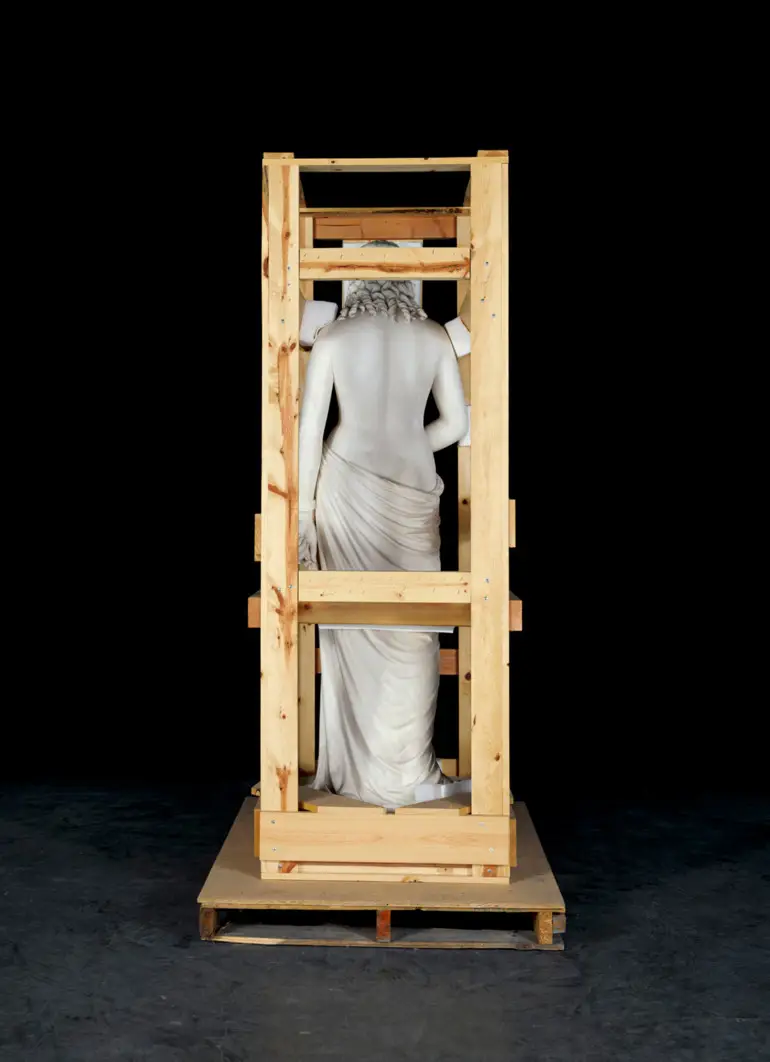Conceptual photographer Catherine Wagner doesn’t just chase the light.
CATHERINE WAGNER, the award-winning San Francisco conceptual artist whose 1978 photographic images of a still-forming Moscone Center will soon be incised into the granite walls of the new Yerba Buena/Moscone subway station near SFMOMA, says in her latest book, Catherine Wagner: Place, History and the Archive, that “photography presents the opportunity to view the world in the way Jorge Luis Borges and the magical realists write about it — as something more.”
In other words, a photographic image, Wagner suggests, is like a single moment that implies a past and also a future. It is an archaeological fragment floating in time, waiting to be interpreted.

Documenting the development of the neighborhood around the Moscone Center over a five-year period during the ’70s was “archaeology in reverse,” she says, because she was witnessing the layering of history beginning with a skeletal infrastructure.
As Shoair Mavlian, director of Photoworks UK, writes about Wagner’s four-decade career in the book, Wagner’s “cornerstone themes include the architecture of public space, the framework of leisure time, our private space, educational structures and the delivery and transmission of knowledge, history, archives and the museum, and the underlying presence of science and technology.”

Represented by the Anglim Gilbert Gallery in San Francisco and widely exhibited in the Bay Area and throughout the United States, Japan and Europe, Wagner also considers each exhibition design as a component of her art and meticulously sets the stage.
She paints walls and backdrops, adds props and controls lighting for atmospheric “readings” of the framed images hanging on the walls, which ultimately are protagonists in an unending play: time.

Perhaps the complex structural buildup for each show reflects Wagner’s ongoing preoccupations: architecture and culture. Home and Other Stories, shown in 1993 at LACMA, consisted of triptych images of the domestic environments of strangers. In her essay in the book, Mavlian suggests the triptychs also present a sanitized version of life, as tightly edited Facebook or social media posts do today.
Wagner’s catchy titles are also like the tips of icebergs filled with content.
One set of images of books written in Braille was titled trans/literate to indicate what the artist was thinking.


“Braille publishing was going away because of technology and blind people had to rely on audiobooks. Reading is the foundation of how we construct ideas — even abstract ideas,” Wagner says. “By documenting this I wanted to talk about the politics of how knowledge gets transferred.”
Another set of images depicting the history of medical splints presumably for wounded soldiers was poignantly called Reparations. The accidental jumble of crated artworks and furniture when the de Young museum was moving from its old building to make room for its new one was photographed for a 2005 exhibition called Re-Classifying History.
At the Baltimore Museum of Industry, Wagner found a collection of vintage light bulbs and used them to create a series of Morandiesque still-lifes titled A Narrative History of the Light Bulb. In the series, one image dubbed Lamps of 1900 was of bulbs from that period; another grouping called Utopia deliberately mixed bulbs from different periods; blue bulbs titled Ode to Yves honored the artist Yves Klein. “I made different narratives from these installations,” Wagner explains. The narratives loosely tracked the invention and the history of the light bulb, but the bulbs also served as metaphors for parallel histories of that time.
Coming full circle, Archaeology in Reverse, Wagner’s most recent exhibition at Mills College in Oakland, where she has taught photography for three decades, was a collaborative site-specific installation with architects Nicholas de Monchaux and Kathryn Moll as well as choreographer Molissa Fenley, her colleague and a professor of dance at Mills.
“It cut into new territory yet cycled back to my earliest engagement with architecture and construction at Moscone. At the Mills College Art Museum, photography interfaced with existing architecture,” Wagner says.


For the exhibition, she exposed the museum’s usually concealed glass-roofed skylight with the use of periscopes that reveal hidden elements within the rafters. Photographs of repaired or altered sections of the building and views from doors and loading docks that had been covered over for half a century form “apertures” to the landscape, bringing to mind the work of 1970s conceptual architect/photographer Gordon Matta-Clark.
“Integrating photography with architecture was an opportunity to move outside the photographic realm to talk about how culture is constructed,” Wagner says. “I wanted to rethink the way history is told.”

This article originally appeared in Spaces’s print edition under the headline: “When Light Bulbs Go Off”.

